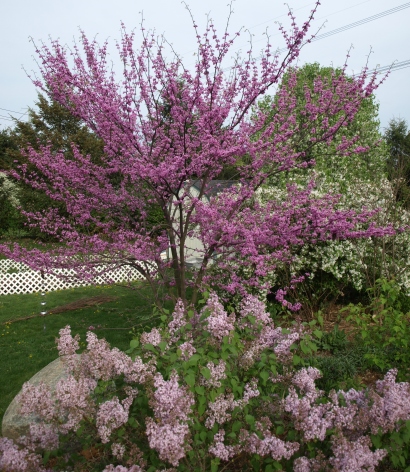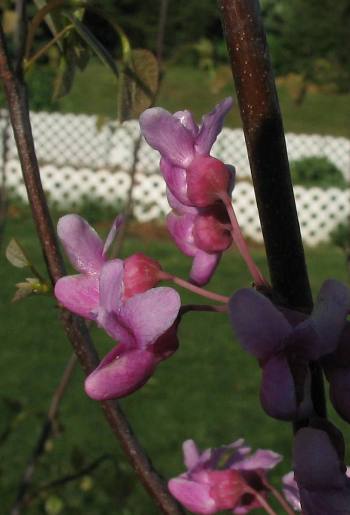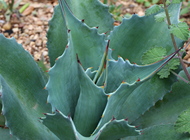 |
Cercis canadensis |
 |
| Common name |
Eastern redbud |
| Family |
fabaceae |
| Life cycle |
tree  |
| Flowers |
various colors, spring |
| Light |
full sun-part shade |
From seed  |
scarify with sandpaper. 8 weeks cold, germinates at room temperature
detailed seed-starting info below
|
Our original tree in Pennsylvania, grown from a twig bought at a discount nursery, took five years to get around to blooming, but was a steady performer for many years to follow. I also managed to start several plants from seed, including white-flowered varieties, but didn't get to see their flowers. Several years after moving to Texas, and missing our redbud, I decided to acquire a new tree, this one of the texensis subspecies that should do well in our steamy climate. It is once again a tiny tree, so I'm prepared to wait a while for flowers.
|
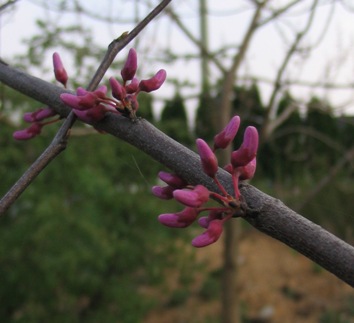
| | The buds that give the tree its name. Quite a sleek look, on the bare branches |
| 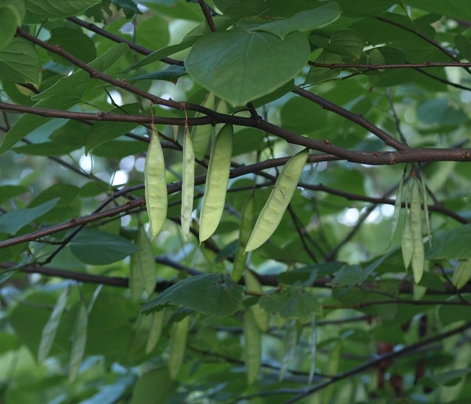
| | Suddenly, after ten years in the garden, it decides to make seedpods. They look empty, though |
|
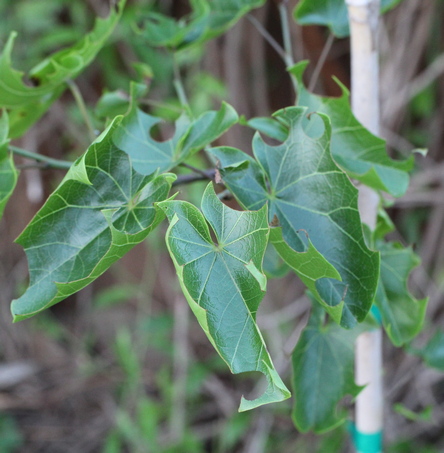
| | Our Texas specimen was attacked (by leafcutter bees, I figure) soon after planting. Luckily, it took the onslaught in stride. The same happened in following years, so I gathered it's a leafcutter favorite. Some quick online research confirms it: redbuds and roses are the two commonly cited woody-plant sources of nesting material for these bees. |
| 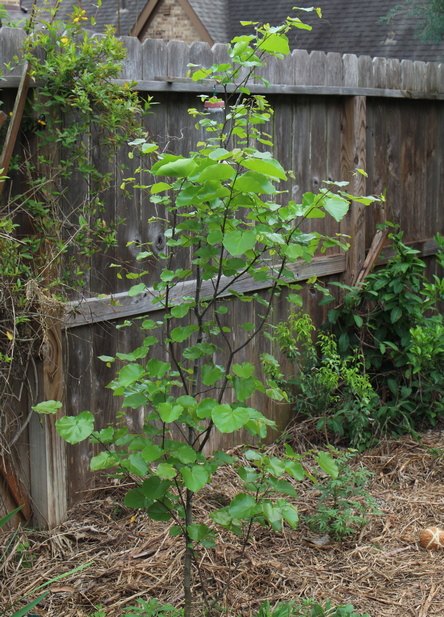
| | Two years later, our texensis has grown nicely. No flowers yet, though. |
|

| | A flower at last, albeit a very lonely one, in late March 2025 – more than 3 years after planting |
|
In our garden, this plant grows in the following area: back fence border One or more images of this plant are included in my stock photo catalog About my plant portraits
PlantLinks to other web pages about Cercis canadensis
Visitors to this page have left the following comments| Bernie | Nov 13, 2008 | Rob, We have an interest in growing red bud trees from seed. We have stripped the seeds from pods of two varieties of trees and are holding them in two jars. Having reviewed your experience with 8 weeks cold, and considering the date, should we delay scarifying the seeds until December? Can they be held cold longer? We are interpreting that they do not need stratification. Is this correct?? We seem to get conflictiing advice on this. We would appreciate your advice. (We are in Columbia, South Carolina) 11/13/08
I don't think holding at the cold stage for longer can do any harm. Or you could simply store the seeds in the fridge for a while, before scarifying and starting the cold stage for real. |
| gardener | May 14, 2009 | Cercis canadensis var Forest Pansy. I let boiling water cool for 7 min. and dropped my (1 week dried inside) harvested seeds into the germination vessel (science name for coffee mug). I let this cool for 13 hours. I put them in the fridge (middle October) sealed in a labeled, rolled -up ziplock with tap water to keep them moist. The water ran dry sometime in February so I added a bit. The amount of water I added was not enough for them to be totally submerged but enough to keep them plumped up (max plumpedness occuring sometime in Jan before the water was used up). If they dry up or loose plumpness, no worries just add more water and more time. I planted mine outside in a planter tray straight from the fridge in early/mid April and now(mid may) they are starting to poke through the semi-dense soil (the kind that when you add water, the water doesn't drain very quickly a.k.a lightly compacted). I watered them gently and ?almost? daily with 1cm of water in the planter well and kept them in indirect sunlight outside. Temp outside night/day:
2-8oC/10- 25oC. Hope this helps with germination but beware because mine have only just started germinating and are mainly just seeds with roots. P.S google overnight boil method for cercis canadensis and add more time depending when your growing season begins and permits early outside yardwork! |
| Jane Anderson (Z6b-7a) | Jun 13, 2011 | Hi,
I have red bud seeds that I collected last fall. I would like to start them now so I may have some sprout by next spring. I thought of sacrifying (sand paper) and then just putting them in a bed. Or do you have a better option?
Also is it wise to seed crabapples from seed or are cuttings better?
Thanks, jane
You can certainly try to start them that way - my own seed-starting ventures are usually in more carefully controlled conditions, but mother nature has a way with things... As for crabapples - if you're trying to reproduce the parent's characteristics (form, bloom or fruit color), you'll do better to propagate by cuttings or grafting (which I have little experience with). On the other hand, starting from seed is fun because you're never quite sure what you'll wind up with. |
- Seed from trade: 'Lavender Twist'.
batch A: 7 wks warm, 8 wks cold, no germination upon returning to warm.
batch B:scarify w sandpaper, no germination at 70F
- Seed from trade: 'Royal White'. scarified w sandpaper, baggy 35F (8w)-70F (90%G, 5d)
I welcome comments about my web pages; feel free to use the form below to
leave feedback about this particular page. For the benefit of other visitors
to these pages, I will list any relevant comments you leave, and if
appropriate, I will update my page to correct mis-information. Faced with an
ever-increasing onslaught of spam, I'm forced to discard any comments including
html markups. Please submit your comment as plain text. If you have a
comment about the website as a whole, please leave it in my
guestbook. If you
have a question that needs a personal response, please
e-mail me.
Last modified:
April 06, 2025
Contact me
|


